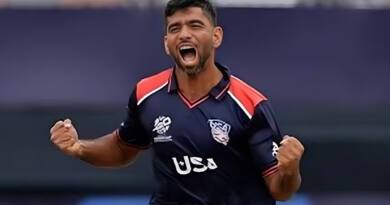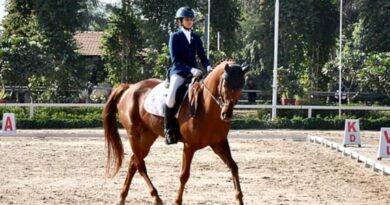Spotlight: On The Traditional Indian Sports And Martial Arts Now
Reviving India’s Heritage: A Modern Lens on Traditional Sports and Martial Arts
By The WFY Bureau Sports Desk
In the ever-evolving landscape of global sports, where commercial leagues and digital fandoms dominate attention, the roots of physical culture run deep in India’s soil. Traditional Indian sports and martial arts are more than games — they are living legacies, shaped by philosophy, discipline, mythology, and community spirit. These practices date back millennia, offering not only physical training but also moral instruction, spiritual grounding, and cultural continuity.
From dusty village arenas to elaborate festival stages, these homegrown disciplines continue to inspire not just nostalgia, but also national pride. With increased efforts by the Indian government, cultural institutions, and grassroots movements to promote indigenous games, there is a growing realisation that these sports deserve not just preservation, but revitalisation.
The Revival Context: From Akharas to Olympics
As of 2023, India ranked among the top five nations globally for Kabaddi, thanks to the Pro Kabaddi League (PKL), which draws over 300 million TV viewers annually. Meanwhile, traditional games like Kho-Kho and Mallakhamb are increasingly being showcased at national school-level competitions under the ‘Khelo India’ scheme. According to the Ministry of Youth Affairs and Sports, ₹750 crore was allocated in 2023–24 to promote indigenous sports — a significant leap from previous years.
Let us explore India’s most iconic traditional sports and martial disciplines — each embedded in history, each echoing the physical and spiritual fibre of a civilisation.
PART I: TRADITIONAL SPORTS OF INDIA
1. Kabaddi: The Breath-Held Battle
Kabaddi, once a rustic game of strength and agility, is now a sport with global appeal. Originating as a hunting and self-defence exercise in ancient villages, it involves two teams, with players taking turns to raid the opponent’s side — tagging as many as possible and returning before exhaling.
Kabaddi has transcended its rural confines to become an international spectacle. As per data from the International Kabaddi Federation, over 50 countries now participate in international tournaments. India has won every Kabaddi World Cup held so far, asserting its dominance in the game.
Historical Roots: Cave paintings in Maharashtra’s Bhimbetka, dating back to 3000 BCE, depict activities resembling Kabaddi, suggesting prehistoric origins.
Current Popularity: The Pro Kabaddi League (launched in 2014) has revived urban interest and turned players into household names.
2. Kho-Kho: Speed, Strategy, Synchrony
Kho-Kho is a tag sport involving agility, swift directional shifts, and high-speed teamwork. Teams of nine alternate between chasing and dodging, with players kneeling in a straight line, springing into action in synchronised turns.
Though it started as a rural pastime in Maharashtra, the sport now boasts a pan-India presence with national championships for men, women, and school-level categories. It also featured in the South Asian Games.
Origin: References can be traced back to ancient scripts during the Mahabharata era. The term ‘Kho’ means ‘go’, symbolising the flow of energy.
Stats: Kho-Kho was played in over 15 countries as of 2022, with trials for Olympic inclusion under consideration.
3. Mallakhamb: Where Strength Meets Spirituality
Mallakhamb — literally translating to ‘pole gymnastics’ — is a blend of strength, flexibility, and yogic control performed on a vertical wooden pole or rope. While it was formalised during the Maratha Empire, its roots run much deeper.
In 2019, the Government of India recognised Mallakhamb as a priority sport under the Khelo India scheme. The Federation claims over 30,000 active practitioners nationwide, with growing global attention, especially in Germany, USA, and Japan.
Cultural Note: Historically used by wrestlers for conditioning, it is considered a spiritual discipline involving pranayama, balance, and inner focus.
Fun Fact: In 2023, a Mallakhamb athlete from Madhya Pradesh set a world record for holding a horizontal pose for 1 minute 47 seconds on a pole.
4. Kushti: The Sacred Art of Wrestling
Kushti is not merely a sport but a sacred regimen. Wrestlers, or ‘pehlwans’, train at akharas under rigorous routines involving strength-building, dietary control, and spiritual discipline. Matches occur in earthen pits, often accompanied by rituals and hymns.
The tradition finds mention in the Rigveda and was a key practice in the Indus Valley Civilization. While modern wrestling has evolved with mats and global rules, Kushti remains a cultural cornerstone in states like Uttar Pradesh, Maharashtra, and Haryana.
Famous Names: Gama Pehlwan (The Great Gama) was undefeated throughout his 50-year career and remains an icon of Indian wrestling.
5. Hopscotch (Stapu or Kith-Kith): The Joy of Simplicity
Hopscotch is known by various names across India — Stapu in the North, Kith-Kith in Maharashtra, and Chindro in Gujarat. Played mostly by children, it requires chalked boxes, a pebble, and balance.
Though seemingly simple, the game boosts coordination, number sense, and gross motor skills. While modern gadgets have diminished its presence, Hopscotch has been included in play-based learning modules in several government schools across Madhya Pradesh and Karnataka.
Global Parallel: Similar versions of Hopscotch have existed in ancient Greece and Rome.
6. Gilli Danda: The Poor Man’s Cricket
Often regarded as a precursor to cricket, Gilli Danda uses two sticks — one small (gilli) and one long (danda). The objective is to strike the gilli mid-air and send it flying.
Originating during the Mauryan period, Gilli Danda was once India’s most popular rural sport. Today, it survives in folk sports festivals and regional competitions, but lacks institutional support.
Fun Fact: Some early cricket legends like Kapil Dev and Sunil Gavaskar are believed to have played Gilli Danda in their childhood.
7. Vallamkali: Oars in Harmony
The spectacular Snake Boat Races of Kerala, called Vallamkali, are among the most visually captivating traditional sports. Boats stretching up to 100 feet, manned by synchronised oarsmen, race along backwaters with rhythmic chants and temple rituals.
Though its ceremonial use dates back to 300 BCE in Assyria, Vallamkali became intrinsic to Onam festivities and continues to attract global tourists.
Stat: The Nehru Trophy Boat Race (held in Punnamada Lake) sees participation from over 100 teams and is viewed live by nearly 2 lakh spectators annually.
8. Jallikattu: Bravery in the Bull Arena
This Tamil Nadu bull-taming sport is both admired and controversial. Celebrated during Pongal, it involves young men attempting to grab and hold the hump of a charging bull.
Despite legal bans and animal rights debates, the Supreme Court reinstated Jallikattu under cultural protection in 2023, with stricter safety norms.
Cultural Insight: Jallikattu bulls are revered and often belong to ancient native breeds such as Kangayam and Pulikulam.
PART II: MARTIAL ARTS OF INDIA — WEAPONS, WISDOM, WARFARE
1. Kalaripayattu: The Mother of All Martial Arts
Arguably the oldest martial art in the world, Kalaripayattu originated in Kerala around the 4th century CE. Known for its fluid sequences, weaponry, and pressure-point strikes, it integrates combat with healing arts such as Ayurvedic massage (uzhichil).
Influence: Kalaripayattu is believed to have inspired East Asian martial arts when Indian monks carried it to China along with Buddhist teachings.
Modern Revival: It is taught in over 300 institutions in Kerala and is recognised by UNESCO as intangible cultural heritage.
2. Silambam: The Dance of the Staff
Silambam, developed by the Dravidian kingdoms, is a martial art involving long bamboo staves, swords, and whips. It is known for swift footwork and complex weapon techniques that resemble a battle dance.
International Reach: Silambam is now taught in over 15 countries, including Malaysia, where the Tamil diaspora preserves it as part of cultural identity.
3. Thoda: Archery with a Twist
Thoda is a rare mix of sport and ritual practiced during Baisakhi in Himachal Pradesh. Participants wear traditional attire and use wooden arrows tipped with blunt rubber, symbolising age-old mythological wars between the Pandavas and Kauravas.
The game involves hundreds of villagers and dancers, making it both a martial art and folk theatre.
UNESCO Status: Listed under India’s intangible cultural traditions with strong roots in the Mahabharata.
4. Gatka: The Graceful Combat of the Sikhs
Gatka is the martial expression of Sikh valour. Practiced using swords, maces, and wooden sticks, it is deeply tied to Sikh religious identity. Gatka displays are common during Nagar Kirtans, showcasing weaponry, acrobatics, and choreographed defence moves.
Fact: Gatka has been introduced in CBSE curriculum as part of sports modules in Punjab and Haryana schools.
5. Thang-Ta and Sarit Sarak: Martial Harmony from Manipur
Thang-Ta combines the use of swords (thang) and spears (ta), while Sarit Sarak focuses on unarmed combat. Practised by the Meitei community, these arts were historically used in wars against invaders and later adapted for performance.
Ritual Aspect: These arts are also spiritual in nature, with performances often beginning with offerings to deities.
6. Kuttu Varisai: The Empty-Handed Warrior
A sibling of Kalaripayattu, this South Indian martial art involves striking, grappling, yoga-like flexibility, and animal forms. Practitioners emulate tigers, elephants, and snakes, drawing tactical movement from nature.
It’s considered the basis for most unarmed martial disciplines in Tamil Nadu and Sri Lanka.
7. Varma Kalai: The Science of Vital Points
Varma Kalai is an esoteric Tamil art focusing on body pressure points (varmam). Practised by healers and warriors alike, it combines medical knowledge with attack-defence systems. Strikes are aimed at nerves, joints, and arteries, often incapacitating opponents without visible harm.
Modern Use: Varma Kalai is being re-integrated into physiotherapy and alternative healing, and taught discreetly under lineage-based training.
Reimagining the Playground
These traditional sports and martial arts form more than a nostalgic echo of a glorious past — they are blueprints for a sustainable future. Rooted in values of respect, endurance, and social cohesion, they offer a counter-narrative to hyper-commercialised modern sport.
Revival efforts need structural support: updated curriculum in schools, cross-border cultural events, digital documentation, and international collaborations. As the diaspora reconnects with their heritage, promoting these disciplines in foreign sports communities can foster pride and inclusivity.
In reawakening these traditions, India does not merely preserve its past — it honours its spirit.





